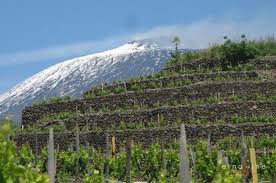by Dwight Furrow
 Wine writers often observe that wine lovers today live in a world of unprecedented quality. What they usually mean by such claims is that advances in wine science and technology have made it possible to mass produce clean, consistent, flavorful wines at reasonable prices without the shoddy production practices and sharp bottle or vintage variations of the past.
Wine writers often observe that wine lovers today live in a world of unprecedented quality. What they usually mean by such claims is that advances in wine science and technology have made it possible to mass produce clean, consistent, flavorful wines at reasonable prices without the shoddy production practices and sharp bottle or vintage variations of the past.
This general improvement in wine quality is to be welcomed but I would argue that for wine aesthetics a more important development is the unprecedented diversity in our wine choices. What wine writer Jon on Bonné, recently referred to as “weird wine”—natural wine, orange wine, wine in cans, wine from unfamiliar locations—is an important part of the wine conversation. Wine is now made in every state in the U.S. and most of those states have their own indigenous wine cultures with distinctive varietals and unique terroirs. Throughout the world, emerging new wine regions from Great Britain to China promise to add to the stock of diverse tasting experiences. Wine grapes are increasingly grown in extreme environments—from high in the Andes, to the deserts of the Golan Heights, to the chill lake sides of Canada. Projects such as Vox Vineyards in Kansas City, Bodegas Torres in Spain, and Bonny Doon in Santa Cruz, California are rediscovering lost or ignored varietals while the University of Minnesota develops new varietals that can survive Northern winters. If you’re willing to navigate our spotty distribution system, most of this diversity is widely available. Although the best wines from the storied vineyards of France are now available only to the super wealthy, new generations of wine drinkers are growing tired of the hamster wheel of Cabernet/Chardonnay/Merlot and are seeking something more adventurous.
This focus on variation has not always been an intrinsic part of wine culture. As I described in my column last month, in the early 1990’s the growing wine culture in the U.S. was dominated by trends that would tend to increase homogeneity. Excessive ripeness, a reductionist approach to wine science, overly narrow critical standards, and most importantly rapid growth in the wine industry were poised to transform wine into a standardized commodity like orange juice and milk, serving a function but without much aesthetic appeal.
So what happened? How did we avoid that monotonous landscape of homogeneous juice? Read more »
